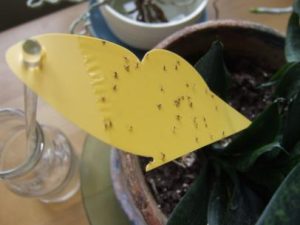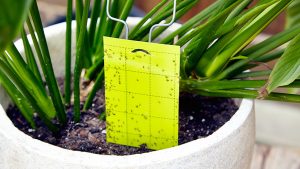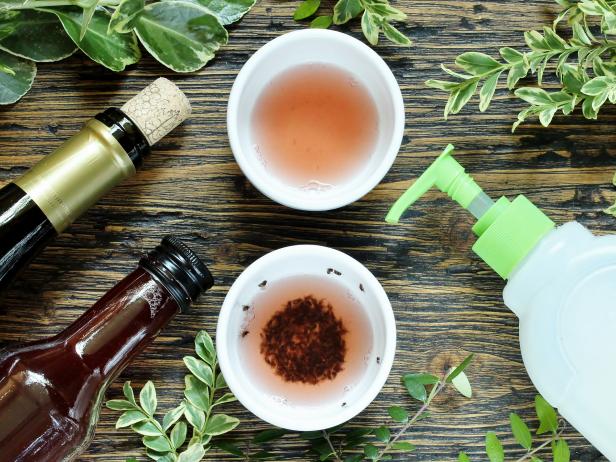Gnats are tiny, flying insects that can occasionally overrun your yard and house. Gnats may potentially result in health issues and harm plants. To remove gnats from your house, let us know in detail.
All in all, what is a gnat?
Not every gnat is harmful. Some consume garden pests and aid with plant pollination. The term “gnat” refers to four small, flying species:
Empty the flies. These microscopic vermin are frequently discovered in or near septic tanks, drains, sewers, and locations where sewage has spilled.
Fly fruit. Fresh or rotting produce, wet organic materials, and liquids like vinegar, wine, and soft beverages all draw the attention of these gnats.
Fly phorids. Phorids are drawn to waste, sewers, and decaying produce, much like drain flies.
Grains of fungi. When the organic content in the soil begins to decompose, these are frequently spotted near overwatered houseplants. Their larvae consume the roots of plants, turning the leaves yellow and dropping them or wilting and killing the entire plant. Additionally, damping-off—a disease that kills seeds before they sprout and weakens or kills seedlings shortly after—can be transmitted by fungus gnats.
newbusinesidea | localesloom | Bizbrandbright | martketMingle | NewBrandBridge | blogmagnets | HuffPostings
How to Handle Gnats
Although they won’t harm your home, gnats can lead to other issues. Not every species of gnat has mouthpieces that can pierce skin, despite the fact that they all bite. In addition to causing itching, redness, inflammation, and swelling, those that do bite through your skin can spread germs and diseases. If you have these symptoms, you might need to visit a physician.

These microscopic insects frequently congregate around the moist soil in potted plants or on bruised or overripe fruit. Most people also enjoy the scents of damp, decaying organic waste and pleasant, fruity scents. Sweat, body heat, and even the moisture in our eyes are attractive to certain animals.
Trash cans, both indoor and outdoor, garbage disposals, sinks, toilets, and drains are common places for gnats to reproduce. We occasionally unintentionally bring them inside with fresh fruit, houseplants, and flowers.
How to Remove Gnats
Gnats multiply swiftly and in great numbers; thus, getting rid of them could need a combination of techniques. Prior to using insecticides or pesticides, consider using natural controls.
How to Remove Gnats from the House
Install a Gnat Catcher
In a small saucer, combine a small amount of sugar, a few drops of dish soap, and a few tablespoons of apple cider vinegar. Place the dish next to the gnats. If necessary, use more than one saucer. The delicious solution will entice the gnats, which will then fall in and become stuck. Until they disappear, frequently replace the solution.
Make use of flypaper.
To trap gnats, suspend sticky flypaper ribbons, but take care where you hang them. They’ll cling to nearly everything, including your furniture, hair, and curtains. Use them indoors only; outside, they will catch helpful animals.
Clear Drains
Pour a half-cup of bleach, diluted with one gallon of water, slowly down the drain. After that, give the drain a thorough rinse with hot water. If a drain cleaning solution is designated for this type of pest management, you can also use it; just make sure you follow the label’s instructions.
Install a Fruit Trap
Place an overripe banana or apple in a plastic-wrapped basin. Make a few punctures in the wrap. If gnats find their way into the bowl, they will be trapped and ready to be disposed of.
Repurpose Any Extra Wine
Keep an almost empty bottle of red wine next to the kitchen sink. You can’t get the alcohol out of here if gnats crawl in.
Spray:
Make use of an indoor insecticidal spray.
Speak with an Expert
Should gnats continue to return, or if you have a severe infestation, get assistance from a reputable pest control provider.

How to Remove Gnats from Indoor Plants
Win Them Over with Sticky Cards
Gnats in house are attracted to yellow, and they can be caught on yellow cards that have an adhesive covering on them. Use little cards or trim larger ones into small squares for optimal results. Place them in the soil surrounding your potted plants, or fasten them to skewers or twigs that are inserted into the pots. Empty the traps into an outdoor trash can after they are filled.
Food-Grade Carbon Black:
You can purchase an organic, abrasive powder called Earth DE, which you can use to sprinkle on your plants’ dry soil. The gnats will be trapped there until their dehydration kills them. It will not work if you put it on moist soil. Place some sand on top of your potting soil before applying the DE to ensure it stays dry. While using it, water your plants from the bottom.
Wet the Ground
One type of naturally occurring bacterium found in soil is called Bacillus thuringiensis (Bt). Bt var. israelensis (Bti) kills fungus gnat larvae. Make a Bti drench and soak the soil in your potted plants according to the directions on the product. It will coat the roots of the plants without damaging them and kill the larvae of fungus gnats that attempt to feed on them.
Allow Plants to Partial Dry Out
In order to ensure that any gnat eggs or larvae in the soil perish, let your plants dry out a little bit in between waterings. Make drainage holes if your pots don’t already have them.
Repot
Repot your plants in fresh potting soil and clean containers if the gnats are returning.
Ways to Avoid Gnats
Seal up gaps, holes, and breaches in your foundation, doors, walls, and windows to prevent gnats from ever entering your house in the first place. If a window screen is torn or ripped, replace it or repair it.
After a meal, store food and drinks and wipe up spills. Keep pet food fresh and clean bowls on a daily basis.
Inspect your outdoor and interior plumbing systems for leaks, and keep the soil around your downspouts and under your gutters consistently moist. Gnats like to reproduce in wet areas, so tidy up leaf and compost piles and keep birdbaths, fountains, and other water features clean.
Pick trash cans with lids that fit tightly, and take out your inside trash once a day. Make sure that outside garbage cans and compost piles are at least 15 feet away from your home.
Fruits and vegetables should be kept chilled rather than on the counter. (Some foods should not be refrigerated so they can continue to ripen, such as pears, tomatoes, and bananas.) Before storing fruits and vegetables, wash them.
How to Remove Gnats From Outside
Drop a mosquito dunk designated as suitable for use around pets and wildlife in a bucket or watering can instead of dousing outside plants with a Bti drench. Allow it to remain in the water long enough for the dunk’s insect-killing bacteria to be released. Cover the soil of your outdoor plants with water. To ensure that any gnat larvae in the soil are killed, continue doing this for a few weeks.
Electric pest traps frequently kill beneficial insects as well, so avoid using them for gnats. UV light-attracting gnat traps might be effective, but they only catch the adults—the larvae are permitted to develop and breed.
There are a lot of gnats surrounding the outside lighting. Replace your lights with low-voltage or yellow “bug lights” to deter them. You may also leave lights near doors and windows off.
Insects that bite but are invisible to the unaided eye could be small, biting midges, commonly known as no-see-ums, and sand gnats. When the weather is still and it’s damp outside, stay indoors or wear protective clothing to avoid them. Additionally helpful could be bug-repellent products and apparel.

